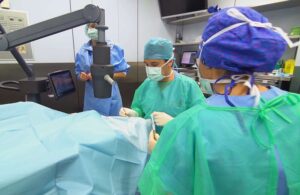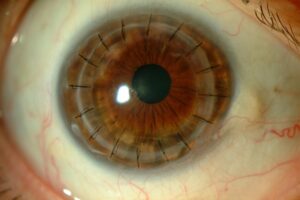Eye diseases
Keratoconus

What is keratoconus?
Keratoconus is a degenerative disease caused by the alteration in the collagen fibres that make up the stroma (the thickest part of the cornea). This alteration causes a gradual increase in the curvature of the cornea, which becomes conical (instead of rounded), resulting in gradual vision loss.
It tends to affect both eyes, usually asymmetrically, and is the most common corneal dystrophy, which is present in about 1 in every 2,000 people in Spain.
Symptoms
Causes and risk factors
Diagnosis
Treatment
It is also common for you to experience intolerance to contact lenses and frequent changes in prescription, mainly as regards astigmatism (link), due to the irregularity that is generated on the surface of the cornea. In fact, the appearance or sudden increase of astigmatism – a type of refractive error that generally remains stable and does not evolve – is one of the main signs of suspected keratoconus.



